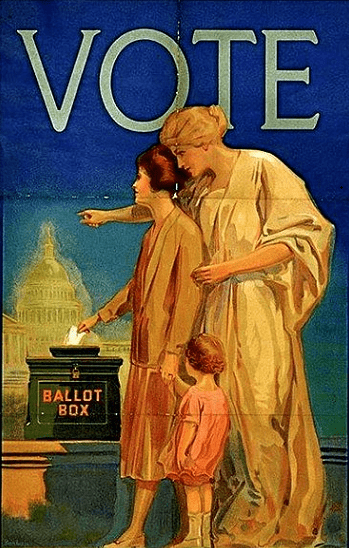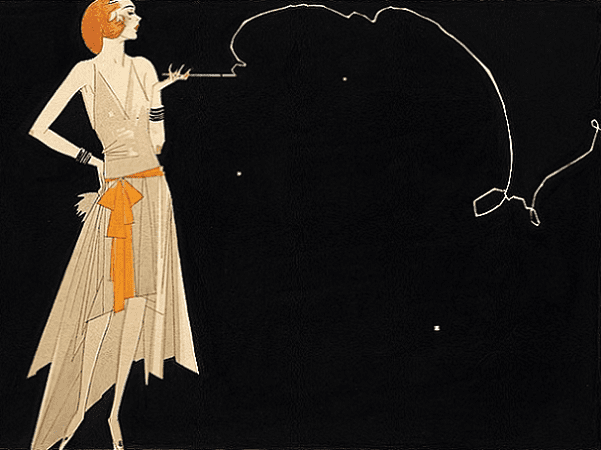Family history is more than just names and dates – it’s the stories of your ancestors’ lives, as well as the times they lived in, the news they talked about, and the events that affected them. In this first article in a series, we’re looking at the Top 10 Facts about the 1920s.
For many people, the 1920s were an exciting time. After all, it wasn’t called the “Roaring Twenties” for nothing!
The economy was on a roll and looked like it wouldn’t be stopping anytime soon, and that meant people had money to burn. For the first time in history, the average American had the spending power to buy things like cars and appliances.
Indeed, the 1920s were marked by immense prosperity and a vast cultural shift.
Here are some interesting facts about the 1920s for you to enjoy.

1) The Decade of Women’s Rights
A 1920s fact we can all be proud of is that the decade saw significant improvements in women’s rights. This was the decade when the 19th Amendment was ratified, officially giving American women the right to vote. This coincided with an increasing sense of independence among women in the country, many of whom held jobs and were much more daring in their fashion sense.
Many women joined the “flapper” movement. These outgoing and fun-loving women became some of the most recognizable participants in the decadent ’20s.
2) The Great Crash of 1929
The end of the 1920s saw one of the most significant economic downturns in history. The Wall Street Crash, also known as Black Tuesday, saw the collapse of share prices on the New York Stock Exchange. The $26 billion loss was the beginning of a total meltdown of financial markets, leading to the Great Depression in the following decade.
This inspired one of the most well-known weird facts about the 1920s: the now-legendary rumor of Wall Street bankers and brokers leaping out of building windows en masse to their deaths. Actually, this didn’t happen.
3) Jazz Was Born
One of the best musical fun facts about the 20s is that this decade was also known as the “Age of Jazz.” The pioneer of the new style of music was Louis Armstrong. Jazz became the music of choice in the popular (but illegal – the 1920s was also the Age of Prohibition) speakeasies of the day. Hence, the older generation saw the Jazz genre as a representation of the sinful decadence of the Twenties. Thankfully, that misrepresentation has since been forgotten and Jazz is now considered to be one of America’s most monumental cultural achievements.
4) A Classic American Novel Was Published
In the 1920s, the American author F. Scott Fitzgerald rose to prominence with a string of successful novels. But none has proven to be more enduring, or endearing, than The Great Gatsby. His tragic novel gives us a glimpse into the highs and lows of the Roaring Twenties.
5) Advances in Aviation
What happened in the 1920s in the world of aviation paved the way for airplanes to become a mainstream way to travel. Two great feats took place in the decade. The first one was the historic accomplishment of Charles Lindbergh, who successfully flew solo across the Atlantic from New York to Paris in May 1927. The next year, Amelia Earhart became the first woman to fly the same route when she kept the flight log as a passenger while two men flew across the Atlantic
6) The Changing of the American Landscape
The U.S. population in 1920 saw a significant migration of people from rural areas to crowded urban centers. By the end of 1920, more than half of the population reported to be living in urban areas. Modern-day America was beginning to take shape. The number of states in 1920 within the contiguous United States was already complete (only Hawaii and Alaska were missing).
7) A Lot of Household Brand Names Originated in This Era
One 1920s fun fact is that many of your beloved food brands began during the 1920s. This includes favorites like Kool-Aid, Reese’s Peanut Butter Cups, Velveeta Cheese, and Baby Ruth Candy Bars, among plenty of others.
8) TV Was Invented
A little-known 1920s fact is that the decade saw the invention of what eventually became a staple in American culture: television. However, TV sets back then were bulky, blurry, and very expensive. It took until the late 1950s for TVs to become a staple of living rooms across the U.S. (thanks to significant price drops).
9) The Scopes Trial
One of the more controversial cases of that era was the Scopes Trial, best known as the Scopes Monkey Trial. The defendant in question was John Scopes, a public school science teacher in Tennessee. His crime was teaching Charles Darwin’s theory of evolution, something that was prohibited at the time by a law called the Butler Act. Yes, even during this time, the theory wasn’t widely accepted yet.
10) Tulsa Race Massacre
The 1920s saw one of the worst incidents of racial violence ever in the United States. The event in question is known as the Tulsa Race Massacre, in which an angry white mob committed acts of violence within the predominantly black neighborhood of Greenwood in Tulsa, Oklahoma. Despite the deaths of hundreds of innocent citizens, it wasn’t widely acknowledged at the time because of a news blackout. It remains a scar on American history and a reminder of the troubled past the country has seen.
Explore Your Ancestors’ History with GenealogyBank
The 1920s were undoubtedly a lively decade to experience. Do you know what your ancestors were doing during this time? Well, you can see for yourself with GenealogyBank. We host one of the world’s largest collections of news archives, obituaries, and other data such as 1920s census records.
Explore over 330 years of newspapers and historical records in GenealogyBank. Discover your family story! Start a 7-Day Free Trial
